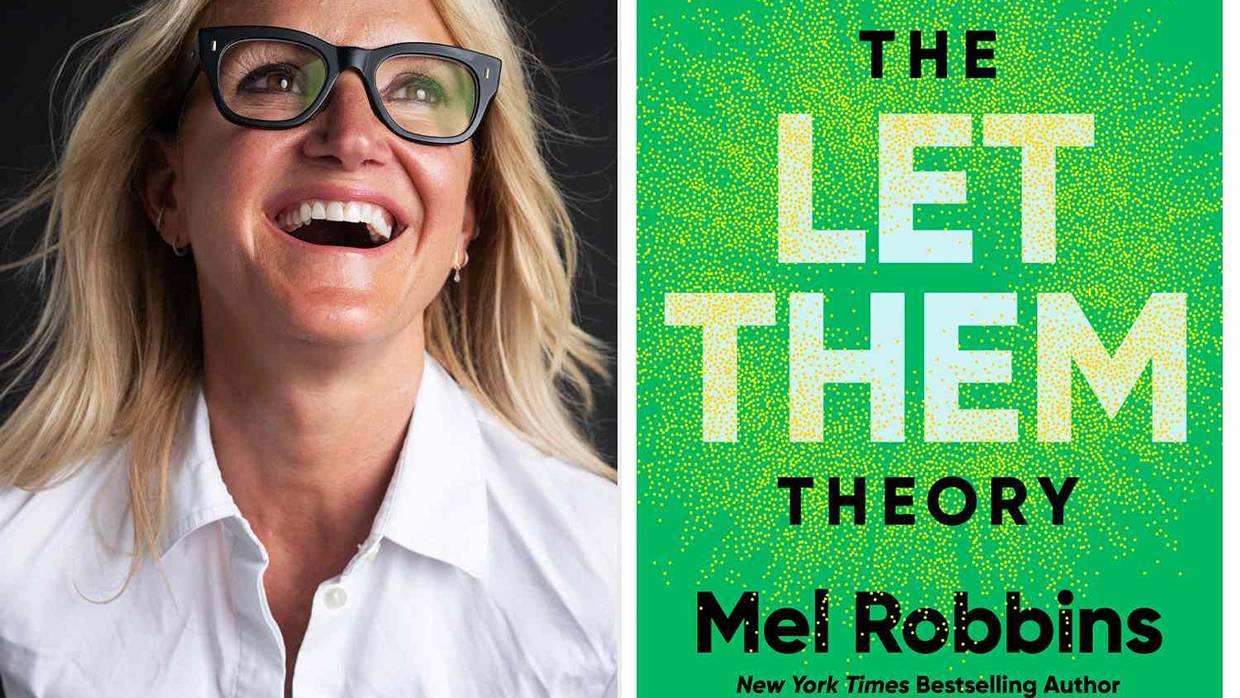
The Let Them Theory: Mel Robbins’ Powerful Lesson on Freedom and Focus
In the world of personal development, certain ideas cut through the noise and strike people with instant clarity. One of those ideas is The Let Them Theory, a concept introduced by bestselling author and motivational speaker Mel Robbins. With her direct, practical style, Robbins has built a reputation for turning simple truths into transformative tools. The Let Them Theory is no exception. It has become a cultural touchstone, a reminder that life feels lighter and more fulfilling when we stop trying to control the behavior of others and instead focus on our own path.
What Is the Let Them Theory?
At its heart, the Let Them Theory is about releasing unnecessary stress and disappointment. Robbins explains it simply: if people want to act in a way you cannot control, let them. If a friend cancels plans last minute, let them. If a colleague refuses to recognize your effort, let them. If a partner reacts with negativity, let them.
Instead of battling constantly to change others, the theory invites us to redirect that energy inward. By letting people be who they are—without clinging to expectations—we reclaim our peace of mind. The point is not to give up on relationships or ignore bad behavior, but rather to stop wasting time trying to control what is never within our control.
Robbins emphasizes that we can’t force people to meet us at our level of effort or kindness. What we can do is decide how to respond, where to place our attention, and what boundaries to set. This mindset shift allows us to stop carrying unnecessary emotional burdens and focus on building the life we want.
Why the Theory Resonates
The popularity of this idea comes from its simplicity and universal relevance. Everyone, at some point, has felt frustration when others don’t act as we hoped. Maybe a sibling is unsupportive, a boss undervalues our work, or a friend pulls away. Instead of spiraling into resentment or self-blame, the Let Them Theory offers a calm, liberating alternative: accept it, adjust your response, and move forward.
It resonates especially in a world where social media constantly shows us how others live, behave, and think. Instead of comparing or trying to change people, Robbins reminds us that freedom lies in letting them do what they want—and remembering we don’t need to join them.
The Book Behind the Theory
Mel Robbins didn’t just stop at a viral idea. She expanded the Let Them Theory into her book, which dives deeper into the practical applications of this philosophy. The book is not a dry manual of psychology but a warm, conversational guide filled with relatable stories, personal anecdotes, and exercises designed to help readers put the concept into action.
She structures the book around common life situations: relationships, work, parenting, friendships, and even self-criticism. In each case, she shows how letting go of control unlocks more peace, productivity, and joy. The message is clear: when you stop chasing after how you wish people would act, you open the door to appreciating life as it actually is.
Robbins also ties the theory to broader themes she has written about before—confidence, courage, and action. Her earlier works, such as The 5 Second Rule, taught readers how to push through hesitation. With The Let Them Theory, she teaches readers how to push through attachment to other people’s choices. Both ideas complement each other, creating a toolkit for building resilience and personal freedom.
Impact and Reception
The book has struck a chord with readers worldwide. It quickly climbed bestseller lists and sold hundreds of thousands of copies within its first months. Estimates place its sales comfortably in the multimillion-dollar range, cementing Robbins’ place as one of the most commercially successful self-help authors of the past decade.
But beyond the sales numbers, the Let Them Theory has found a life of its own in conversations, social media posts, and even therapy sessions. Many readers report that the phrase “let them” has become a daily mantra—short, sharp, and empowering. Its viral appeal comes from being instantly memorable and easy to apply in real time.
A Tool for Modern Stress
One reason the theory feels so relevant today is that it addresses a very modern form of stress: over-engagement. Many of us are constantly pulled into the lives and choices of others, whether through texts, workplace expectations, or the never-ending scroll of social feeds. We exhaust ourselves trying to fix, persuade, or adjust people who never asked us to.
The Let Them Theory cuts through that noise. It doesn’t suggest detachment in a cold or selfish way; rather, it encourages compassion. By letting people live as they choose, we are respecting their autonomy. At the same time, we protect our own energy for what truly matters.

Living the Let Them Way
Applying this philosophy does not mean being passive. On the contrary, it allows for stronger boundaries. If someone repeatedly lets you down, you can let them—but also let yourself choose whether they remain in your inner circle. If a workplace undervalues you, you can let them—but also seek an environment that aligns better with your worth.
The freedom comes not from resignation but from clarity. You no longer waste emotional capital trying to change the unchangeable. Instead, you invest in areas where your choices and actions genuinely matter.
Mel Robbins’ Let Them Theory is more than just a catchy phrase—it is a philosophy of freedom, boundaries, and self-respect. By letting others be who they are, without clinging to expectations, we free ourselves to focus on what truly matters: our own growth, peace, and happiness.
The success of Robbins’ book shows how deeply this message resonates. Millions of readers have embraced the reminder that life becomes lighter when we release control. In a noisy world filled with demands and expectations, perhaps the simplest wisdom of all is this: let them—and then, let yourself live fully.
By; Wilgens Sirise






